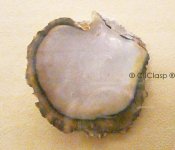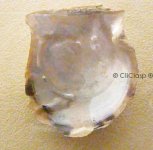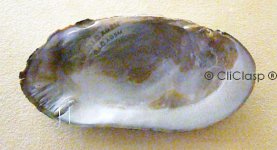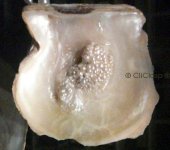You are using an out of date browser. It may not display this or other websites correctly.
You should upgrade or use an alternative browser.
You should upgrade or use an alternative browser.
Back from a London journey, more stories about pearls
- Thread starter CLICLASP
- Start date
CLICLASP
Well-known member
- Joined
- Apr 23, 2006
- Messages
- 1,208
Now, still from London, we are moving from the British museum to the Natural history museum, and it's time for a small revision of natural history of pearls ...
Photos taken through windows .. sorry for quality.
Which is which? and where do these oysters come from ?
Play now
Photos taken through windows .. sorry for quality.
Which is which? and where do these oysters come from ?
Play now
Attachments
Last edited:
CLICLASP
Well-known member
- Joined
- Apr 23, 2006
- Messages
- 1,208
A big thank to everybody for your interest,
we just passed 2000 readings of this thread and 7000 the previous one here :
https://www.pearl-guide.com/forum/pearl-history/2755-how-old-pearl-play-again.html
we just passed 2000 readings of this thread and 7000 the previous one here :
https://www.pearl-guide.com/forum/pearl-history/2755-how-old-pearl-play-again.html
Last edited:
Wow CLICLASP, that is a big number of reads! One addition to the pendant I showed: As the settings in this times where always closed on the back, the rubies are foiled on the back, what changes the colour a bit - and makes them appear different, a bit more spinel-like.
CLICLASP
Well-known member
- Joined
- Apr 23, 2006
- Messages
- 1,208
2010, time to resume the story,
- the first oyster is the "black lip oyster", this one comes from the Seychelles,
- the second one is the Japanese pearl oyster.
Of course, photos not to scale.
Now, the story finishes soon, for the ones who likes stories, I have started a story of the clasp in jewelry through ages here, you can join the group:
http://www.facebook.com/pages/anna-tabakhova-bijoux-paris/106363538537#/group.php?gid=236759659887
Enjoy !
- the first oyster is the "black lip oyster", this one comes from the Seychelles,
- the second one is the Japanese pearl oyster.
Of course, photos not to scale.
Now, the story finishes soon, for the ones who likes stories, I have started a story of the clasp in jewelry through ages here, you can join the group:
http://www.facebook.com/pages/anna-tabakhova-bijoux-paris/106363538537#/group.php?gid=236759659887
Enjoy !
newberry
Well-known member
- Joined
- Aug 8, 2009
- Messages
- 1,779
We just passed 2500 readers, but few participation , bored of stories ? stop or more ?
Cliclasp, I love reading this thread because it is so informative but unfortunatly I find I do not have a clue to the answers to even post a guess. I am sure I'm not the only one who feels this way because of the number of views. Please don't stop.
lisa c
Perpetual Pearl Student
- Joined
- Jun 28, 2009
- Messages
- 3,600
nets? and the planets?
nets? and the planets?
These (the 1stCheapside Hoard post) remind me of fishing nets being pulled up from the sea.
With the pearls lining the sides they then made me think of the nets holding the pearlbearing shells, but that's only free-associating.
Also, the arms bearing the pearls, swinging from the pivot, number 6 (one arm could be missing), and brought to mind the science fair planets models; another vision then came, of Chinese lantern-globes hanging over the waters at night. To attract the catch, or illuminate their work? I don't know fishing...
I wish I had your knowledge; this is fun to follow!
nets? and the planets?
So what's your opinion of this specimen ?
Another curiosity
These (the 1stCheapside Hoard post) remind me of fishing nets being pulled up from the sea.
With the pearls lining the sides they then made me think of the nets holding the pearlbearing shells, but that's only free-associating.
Also, the arms bearing the pearls, swinging from the pivot, number 6 (one arm could be missing), and brought to mind the science fair planets models; another vision then came, of Chinese lantern-globes hanging over the waters at night. To attract the catch, or illuminate their work? I don't know fishing...
I wish I had your knowledge; this is fun to follow!
Last edited:
Similar threads
- Replies
- 8
- Views
- 4K
- Replies
- 10
- Views
- 7K






